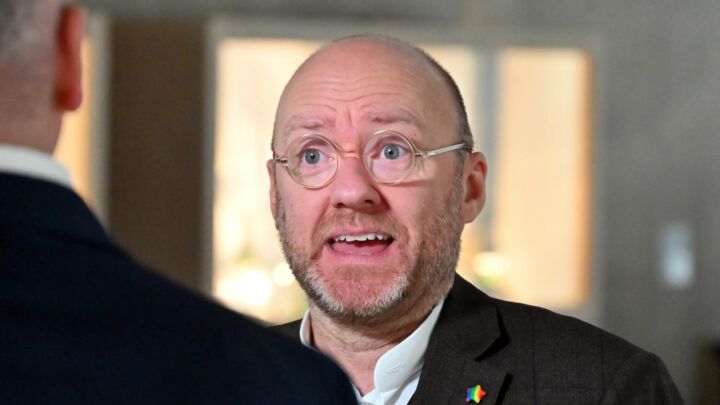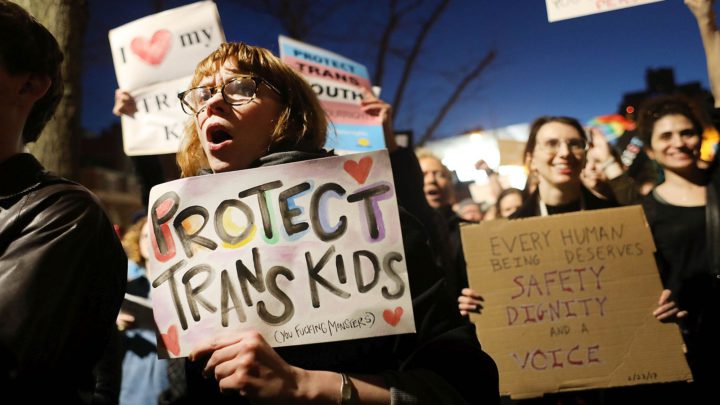Secretary of state for conspiracy theories
How Theresa May is fuelling unfounded rumours about ‘VIP paedos’.

If you thought conspiracy theories came only from the sidelines of society or from the underbelly of the internet, think again. For this week, in Theresa May’s bizarre response to an official report into whether the Home Office covered up paedophile abuse by powerful figures, we can see that very often it’s the most respectable sections of society that encourage and inflame conspiratorial thinking. In treating the report’s lack of evidence for a cover-up as a sign that ‘there might have been a cover-up’, home secretary May has revealed that irrationalism and febrile suspicions about the faceless men who secretly control our world are not only the preserve of saddos who populate weird discussion boards on the web.
The review and report into how the UK Home Office dealt with allegations of abuse between 1979 and 1999 was carried out by Peter Wanless, chief executive of the National Society for the Prevention of Cruelty to Children (NSPCC) – which itself was weird, like asking the boss of Philip Morris to conduct a government overview of smoking. Nonetheless, while the NSPCC might fantasise about abuse occurring in pretty much every home in the land, and be very good at inventing figures to ‘prove’ that such widespread wickedness exists, even it could not magic up evidence that the Home Office had destroyed files and documents relating to child abuse by politicians and other leading social figures, one of the issues Wanless was asked to investigate. And so his report concluded that this rumour about the Home Office being in the pocket of paedos, and covering child abusers’ tracks by shredding or burning documents like whackos out of a Dan Brown novel, is fact-free. The report said that nothing was found to ‘support a concern that files had been deliberately or systematically removed or destroyed to cover up organised child abuse’.
Once, in more rational, enlightened times, the utter absence of evidence for an alleged act of evil might have been taken as proof that said evil act did not occur and led to everyone going home and getting on with their lives. Not today. Today, in our era of Rumsfeldian ‘unknown unknowns’, when the phrase ‘absence of evidence is not evidence of absence’ trips off the tongue like a mantra, the failure to substantiate claims of a cover-up has led to claims that the cover-up must have been really, really thorough! Today, a lack of evidence boosts rather than defusing wild imaginings about wickedness. And May has helped to stoke this dark, swirling, evidence-ignoring response to Wanless’s report. In her statement to parliament after the report was published, she said we are still unsure about what happened in the Home Office in the 1980s and 90s. ‘There might have been a cover-up’, she said. And lo, the internet was once again on fire with whispers about politicians helping out paedophiles, about a ‘paedophile ring’ at the very heart of Westminster.
It’s important to note that this rumour about unspeakable and hidden evil among the political elite – which so eerily echoes unhinged accusations made throughout history that various priestly or political classes were made up of child-raping, child-sacrificing sects – was given life by the political elite itself. So it was Labour MP Tom Watson, fresh from conspiratorially imagining that Rupert Murdoch and his minions ‘orchestrated public life from the shadows’, who first started banging on about a ‘VIP paedophile ring’ in Westminster whose debauched antics were apparently covered up by the Home Office itself. In October 2012, Watson told parliament of whispers about a ‘powerful paedophile network linked to parliament and No.10’. Strikingly, 135 MPs signed his petition calling for an investigation into this ‘VIP child abuse network’ and ‘whether there was a cover-up’. The media, both tabloid and broadsheet, ran the story with glee, with frontpage screeching about ‘PAEDO COVER-UP BY POLITICIANS’. The online conspiracy-theory set thought all their Christmases had come at once, writing demented missives about Westminster being a ‘paedophile playground’. David Icke praised Watson, the ‘paedophile whistleblower’.
So here, a conspiracy theory about a cover-up was given life, given legs, not by ill-educated web-surfers so cut off from their society that they become convinced that it’s a massive paedo-led, lizard-packed conspiracy against them, but by those who run society. And now May has inflamed it once again. So has Wanless, as it happens. When the PM David Cameron rather sensibly said that the lack of evidence for a cover-up should squash the crazy rumours – ‘conspiracy theorists [will have to] look elsewhere’, he said – Wanless hit back. Despite concluding that ‘there wasn’t a cover-up which involved taking things out of the registered filing system of the Home Office’, a key accusation made by the VIP-paedo hunters, Wanless was made uncomfortable by Cameron’s talk of conspiracy theories. ‘I think it’s really important that no one regards our piece of work as the beginning and end of all this’, he said, thus also helping to keep alive the rumours his own report found no evidence for. It seems reasonable to think that it is because of his position at the NSPCC, which thrives on the idea that child abuse is rampant, that Wanless is made uncomfortable by the idea of telling the public that a certain, very infamous claim of organised child abuse is unproven. And so he is more open-ended instead. This surely shows up the spectacular folly of putting someone with a vested interest in an issue in charge of a supposedly neutral report into said issue.
So why did May, and others around her, rush to say ‘there might have been a cover-up’ in response to a report that found no evidence of a cover-up? For two reasons, I think. The first is plain old opportunism: May recognises that cosying up to the survivors of or activists around child abuse is a shortcut to the moral highground these days, likely to win you favourable coverage in the media, especially the tabloid media. The second reason is scarier: it’s because the idea that the establishment is rotten, corrupt, peopled by the self-interested and the wicked, is no longer only cleaved to by the cynical and cut-off – now, the establishment views itself in this light; it distrusts and fears itself.
From Tony Blair’s whispers about powerful ‘forces of conservatism’ warping the political sphere to the late weapons inspector David Kelly’s talk of ‘dark actors playing games’ to the uncountable number of articles in the Guardian and elsewhere about ‘cults’ of bankers and neocons controlling the economy and our lives, it is establishment insiders who now do most to spread conspiratorial thinking about the establishment. It is now the likes of Theresa May who openly invite whispers and finger-pointing about her own class, her own set of people. It is now often politicians themselves who set in motion politician-demonising canards. Conspiracy theorists are no longer the barbarians at the gates; they’re inside the gates, running the show.
Brendan O’Neill is editor of spiked.
To enquire about republishing spiked’s content, a right to reply or to request a correction, please contact the managing editor, Viv Regan.









Comments
Want to join the conversation?
Only spiked supporters and patrons, who donate regularly to us, can comment on our articles.